을지로는 건축을 통해 서울의 역사를 오롯이 보여 주는 공간이다. 20세기 초 이 지역을 중심으로 상권이 개발되면서 서구 양식의 근대 건축물들이 들어섰고, 수십 년간 공업 지구로서 호황을 누렸던 시기에 지어진 맞벽 건축 양식의 건물들이 여전히 남아 있다. 여기에 더해 1980년대 적극적인 도심 재개발 사업이 시행되어 현대식 고층 건물들도 밀집해 있다.
Euljiro’s architecture serves as a time capsule of Seoul’s modern history. The evolution of this area into a commercial district in the center of the capital can be seen in its small workshops, commercial-residential complexes, and soaring office towers.
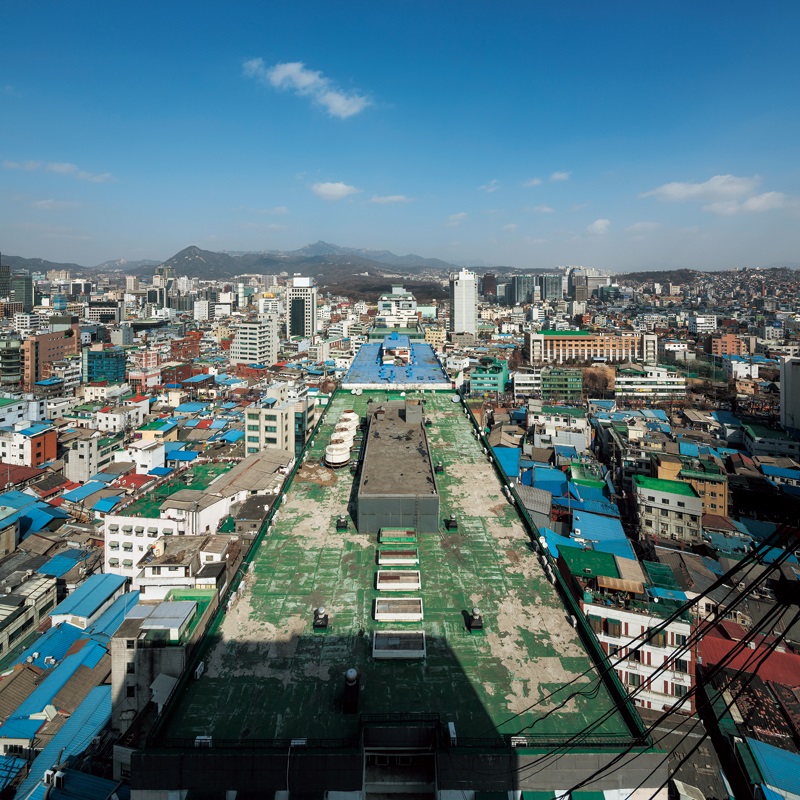
을지로는 서울특별시 중구 원도심을 가로지르는 길이 약 3km의 6차선 도로이다. 대한제국(1897~1910) 시대의 제단인 환구단(圜丘壇) 앞 시민 공원에서 시작해 신당동(新堂洞) 한양(漢陽)공업고등학교에 이르는 길이다. 좀 더 유명한 시설을 기준으로 하면, 서울특별시청에서 출발해 복합 문화 공간 동대문디자인플라자에서 끝난다. 북쪽에는 청계천로, 남쪽에는 퇴계로가 을지로와 함께 동서로 나란히 뻗어 있다. 일반적으로 방산동(芳山洞), 산림동(山林洞), 입정동(笠井洞) 등 주변 지역을 한데 아울러 ‘을지로’라고 말한다.
Euljiro is a six-lane street that bisects the downtown area of Jung District in the heart of Seoul. Stretching east to west, it begins at a public park close to Hwangudan, an altar from the Korean Empire (1897–1910), and ends at Hanyang Technical High School in Sindang-dong. Using more familiar landmarks, Euljiro runs from Seoul City Hall to Dongdaemun Design Plaza, the futuristic cultural complex known colloquially as DDP. The 11-kilometer-long Cheonggye Stream lies to the north, and Myeong-dong, the major retail hub, to the south. When Seoulites speak of Euljiro, they usually mean the thoroughfare and its surrounding neighborhoods, not just the street itself.
서울의 대표적인 상업, 업무 지구인 을지로는 건축적 면모 또한 남다르다. 고풍스러운 근대기 건축물들과 슬레이트 지붕을 덮은 낡은 공장 건물들, 그리고 세련된 외양의 고층 빌딩들이 공존하면서 독특한 광경을 연출한다. 이는 을지로의 역사가 만들어 낸 풍경이다.
At first glance, Euljiro may seem like a forest of skyscrapers, but a closer look reveals an architectural potpourri. Towering glass and steel giants are interspersed with much simpler buildings from the mid-20th century and old, sheet-roofed workshops. Collectively, they tell the story of the commercial district’s history.
다층적 스펙트럼 – A CHORUS OF STYLES
을지로가 도시 공간으로서 역사에 처음 등장한 시기는 조선(1392~1910) 시대다. 이곳은 서울 건도(建都)와 함께 정비한 행정구역 가운데 남부(南部) 명철방(明哲坊)에 속했다. 궁궐을 지척에 둔 도성 안 거리로, 하루아침에 도시 중심부로 부상했다.
The origins of Euljiro are rooted in the Joseon Dynasty (1392–1910), when the street belonged to Myungcheol-bang, an administrative district formed after Seoul was designated as the capital. The district’s proximity to the royal palaces turned it into the city center almost overnight.
을지로는 구한말과 일제 강점기에 더욱 번성하였는데, 1909년에는 민족 자본으로 설립된 대한천일은행(大韓天一銀行, 현재 우리은행)의 점포 광통관(廣通館)이 을지로 입구에 들어섰다. 서양식 2층 건물인 광통관은 지금도 은행 점포로 계속 사용되고 있으며, 2002년 서울특별시 기념물로 지정되었다.
Euljiro thrived throughout the late Joseon era and the Japanese occupation (1910–1945). In 1909, it saw the construction of Gwangtonggwan, a Western-style, two-story branch office of Daehan Cheonil Bank (now Woori Bank). The building, declared a Seoul Metropolitan Monument in 2002, serves Woori Bank customers to this day, making it the oldest continuously operating bank building in Korea.
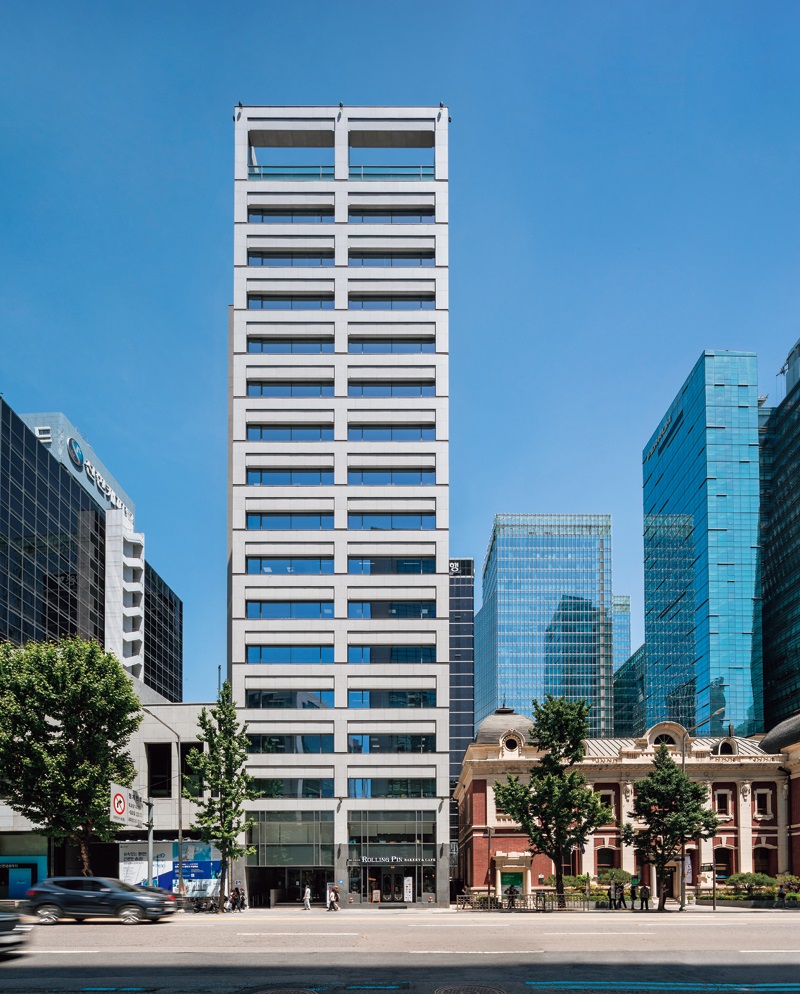
1925년에는 현재 동대문디자인플라자가 있는 자리에 경성(京城)운동장이 준공되었고, 이듬해에는 태평로1가에 경성부청 청사가 지어졌다. 이 건물은 1946년부터 서울특별시의 청사로 사용되다가 2012년 신관이 건립됨에 따라 이후 도서관으로 활용되고 있다. 이로써 을지로의 기점과 종점 두 곳에는 대형 시설들이 자리하게 되었다. 1928년에는 명동(明洞) 입구에 경성전기주식회사(현재 한국전력공사) 사옥이 세워졌다. 당시로서는 매우 높은 지상 5층 건물로 국내 최초로 내진, 내화 설계가 적용되었으며 엘리베이터까지 갖추었다.
In 1925, Gyeongseong Stadium — later renamed Seoul Stadium and then Dongdaemun Stadium — was completed on the site now occupied by Dongdaemun Design Plaza. The following year, Seoul’s former City Hall opened its doors. After the Seoul Metropolitan Government moved into a newly built 13-story, eco-friendly structure in 2012, the original building was transformed into the Seoul Metropolitan Library. Large municipal structures continue to anchor both ends of Euljiro today.
Elsewhere, Western-style buildings began to appear in the early 20th century. They clustered around Euljiro 2-ga (“ga” meaning “street”), the busiest part of the entire area. In 1928, the headquarters of what is now the Korea Electric Power Corporation was built at the entrance to Myeongdong. Its features broke the mold in commercial construction: a then-towering five stories, Korea’s first fire- and earthquake-proof design, and an elevator. This imported architectural style eventually spread to other parts of the street.
을지로는 번화가인 을지로 입구 일대를 중심으로 근대 문명 초기부터 서양식 건물이 들어서기 시작했으며, 이후 이곳의 도시 건축은 같은 방향으로 전개되었다. 그 첫 흐름은 1930년대부터 시작해 1950~1960년대에 양산된 2~3층 높이의 콘크리트 상가 건물들이었다. 지금도 을지로 3가에서 5가 일대에는 당시 지어진 건물들이 아직 많이 남아 있다. 건물들이 거리를 두고 서로 떨어져 있지 않고 50센티미터 이내로 다닥다닥 붙어 있는 ‘맞벽 건축[對壁建築]’이 대부분이다. 또한 지금은 외장재로 잘 사용하지 않는 타일로 외부를 마감한 건물들이 많아 이 자체만으로도 희귀한 역사적 자료라 할 수 있다. 을지로 3가에는 세월의 더께가 앉은 허름한 건물들 앞에 2011년 지어진 지상 25층 높이의 오피스 빌딩 파인 애비뉴(Pine Avenue)가 마주하고 있어 대조를 이룬다. 이처럼 을지로에는 건립 연도, 건축 양식, 건물 높이 등이 제각각인 건물들이 한데 어우러져 있다. 가히 한국 근현대 건축의 박물관이라 할 만하다.
It began with a group of two- and three-story concrete commercial buildings in the 1930s. From the end of the Korean War through the 1960s, Korea underwent massive reconstruction. Many of the surviving buildings of this era are huddled shoulder to shoulder between Euljiro 3-ga and 5-ga, separated by gaps less than 50 centimeters wide.
Another noteworthy aspect of the area is its abundance of buildings clad with tile, an exterior material seldom used today. This alone makes them rare architectural reminders. In Euljiro 3-ga, it is easy to notice the stark contrast between the low-rise structures covered in the dust of time and Pine Avenue, a 25-story glass edifice towering over its older forerunners. Euljiro, with its kaleidoscope of buildings representing different eras and architectural styles, is a veritable time capsule of modern Korean architecture.
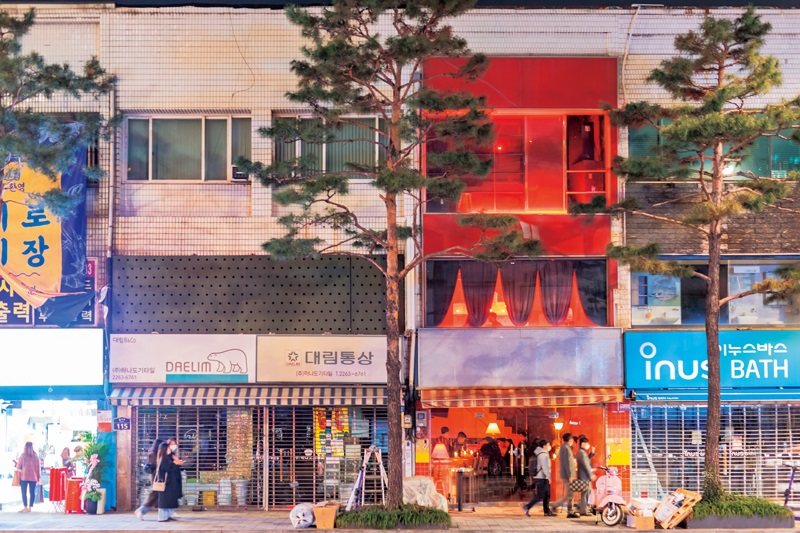
최초의 주상복합 건물 – FIRST COMMERCIAL-RESIDENTIAL COMPLEX
우리나라는 한국 전쟁 이후 압축적인 경제 성장을 이뤄 냈다. 을지로는 이 흐름의 선두에 선 지역으로 지금까지 그 역할을 이어오고 있다. 그 출발점은 국내 최초의 주상복합 건물인 세운(世運)상가이다. 이곳은 한국 근대 건축을 대표하는 건축가 김수근(Kim Swoo-geun, 金壽根, 1931~1986)의 설계로 지어졌다. 세운상가, 대림(大林)상가, 진양(進洋)상가 등 총 8개 건물로 조성되었는데 이 상가군을 통칭하여 세운상가라고 부른다. 가장 먼저 준공된 현대(現代)상가가 2009년 철거됨에 따라 현재는 7개 동만 남아 있다.
One of the symbolic starting points of Korea’s post-war economic growth is Sewoon Plaza, the nation’s first commercial-residential complex. It was designed by Kim Swoo-geun (1931–1986), a leading figure of modern Korean architecture.
Sewoon Plaza was built in phases from 1966 to 1968. The complex initially consisted of eight buildings, mostly named after their respective construction companies, and spanned one kilometer, from Jongmyo toward Mt. Nam. Today, seven remain; the first completed structure, the Hyundai Mall Apartments, was demolished in 2009.
1966년 착공을 시작해 순차적으로 완공된 세운상가는 종묘 앞에서 시작해서 필동(筆洞)에 이르는 1km 남짓 되는 초대형 타운이다. 단지 내에는 기계, 공구, 전기, 전자 등의 부품부터 가전 제품까지 망라하는 거대한 상권이 형성되었다. 상점 위층의 아파트에는 당시 주거 시설에서는 보기 어려웠던 스팀 난방, 욕조, 엘리베이터 등이 갖춰졌다. 건물에는 아파트 입주민들을 위한 실내 골프장과 사우나도 구비되었다. 세운상가는 도심 한복판에 우뚝 선 고급 아파트의 위용을 자랑하며 순식간에 서울의 명물이 되었다. 시골 사람이 서울에 와서 세운상가만 보고 돌아가도 서울을 다 본 것과 진배없다는 말까지 생길 정도였다.
Sewoon means “ to at tract all the world’s energy.” True to its name, the lower floors of this novel mixed-purpose complex quickly developed into a sprawling electronics hub. Here you could find components for all manner of appliances alongside machinery and tools, or take a break at one of the cafés and restaurants nestled between the shops. The upper floors boasted high-end apartments, equipped with steam heating, bathtubs, and elevators — rarities in housing at the time. The complex, which featured an indoor golf course, a sauna, and even an elementary school, quickly became a Seoul landmark. A saying arose: “See Sewoon Plaza, and you’ve seen Seoul.”
그중 대림상가는 세운상가 전체를 통틀어 가장 작품성이 높은 건물이다. 김수근이 애용하던 건축 양식인 구조주의의 특징이 잘 드러난다. 건물을 저층부와 보행 데크, 중간 돌출부, 고층부로 구성한 뒤 각각 출입이 가능하게 만들었다. 저층부에는 계단이 독특한 형태로 설치되어 있으며, 데크와 돌출부를 가느다란 콘크리트 기둥이 연결해서 받치는 모습도 특이하다. 돌출부의 중앙에는 표면에 항아리 파편을 장식으로 붙였는데 당시 영국에서 유행하던 뉴브루털리즘(New Brutalism)의 거친 스타일을 연상시킨다.
Among all eight buildings, the one built by Daelim best showcases Kim Swoo-geun’s artistic vision, illustrating the architect’s often-used structuralist style. The building is divided into three sections: the ground level; a pedestrian deck, which contains a sheltered balcony; and residential floors above. Each level is accessible independently. The ground floor features a unique staircase, and the balcony is supported by slim concrete columns, enhancing the structure’s visual appeal. The balcony’s center is decorated with pottery fragments, evoking the raw aesthetic of New Brutalism, then popular in the United Kingdom.
After a new electronics market opened in Yongsan in 1987, the center of gravity in electronics retail shifted away from Sewoon Plaza, sending it into a long decline. In the 2000s, the metropolitan government considered demolishing the complex but ultimately opted to revitalize the buildings as part of its Seoul Urban Regeneration Project. Renamed Makercity Sewoon in 2017, parts of the complex now provide workshop space to entrepreneurs in creative industries. Electronics vendors continue to work and live there, serving as custodians of Seoul’s economic legacy. However, the government recently revived its plans, and the landmark is earmarked for demolition to make room for a public park.
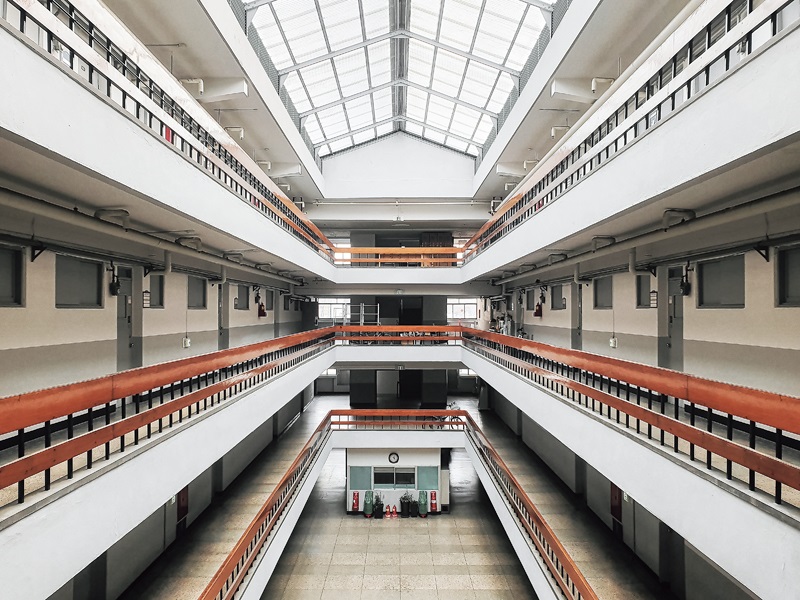
역동적인 고층 빌딩들 – UNIQUE SKYSCRAPERS
1970~1980년대에는 시청과 지하철 2호선 을지로입구역 사이에 롯데, 웨스틴 조선, 플라자, 프레지던트 등 대형 고급 호텔들이 줄지어 들어서면서 호텔 거리가 형성되었다. 그 옆에는 은행 점포들이 하나둘 지어지면서 남쪽의 한국은행 본점과 북쪽의 광통관을 잇는 금융 거리가 탄생했다.
During the 1970s and 1980s, a notable transformation occurred between City Hall and Euljiro 1-ga Station. A string of large, high-end hotels was built, followed by a wave of bank buildings, creating a financial street that began at the Bank of Korea headquarters in the south and ended at Gwangtonggwan in the north.
1986년 준공된 을지한국빌딩은 이 시기를 대표하는 지상 20층, 지하 4층 규모의 사무실 건물이다. 몸통 전면에 커튼 월(커튼처럼 붙였다 떼었다 할 수 있는 유리 벽)을 설치해 첨단 이미지를 갖춤과 동시에 양옆 모서리 부분은 화강암으로 마감해서 안정감을 높였다. 건물 중간은 벽체를 안으로 밀어 넣어 발코니 공간을 확보했는데, 건축물의 인상을 한층 풍부하게 만드는 조형적 기능을 제공한다. 일명 ‘하늘 공원(Sky Plaza)’이라 불리는 이곳은 시민들에게 개방되어 휴게 공간 및 전시 공간으로 활용된다. 국내 건축물로서는 처음 시도된 것이었기에 큰 화제였다.
The Eulji Hankuk Building, a 20-story office tower with four additional underground levels completed in 1986, embodies the era’s architectural zeitgeist. Its façade is equipped with a curtain wall, which confers an ultra-modern appearance upon the structure. This is complemented by granite-covered sides, imbuing stability. The middle of the building, pushed inward to create a balcony-shaped space, makes for a bold, eye-catching look. The space behind it, located on the 10th floor, is dubbed “Sky Plaza.” It is used for exhibitions and open to the public.
2000년대 이후에는 을지로 입구를 중심으로 한 재개발이 한층 속도를 내면서 고층 유리 건물들의 각축장이 되었다. 을지로 입구에서 을지로 2가 사이의 거리는 수백 미터밖에 되지 않지만, 고층 유리 빌딩들이 상당히 밀집해 있다. 그중 2010년 완공된 페럼 타워(Ferrum Tower)를 눈여겨볼 만하다.
지상 28층, 지하 6층 규모인 이 건물은 육면체를 기본 형태로 삼되 건물 윤곽을 거침없는 사선으로 처리해 현대적인 느낌을 극대화했다. 이 때문에 바라보는 위치에 따라서 건물 외형이 제각기 달리 보인다. 깎인 각도가 크지는 않지만, 수익성 확보 경쟁이 벌어지는 치열한 도심 재개발 사업을 감안하면 건축주가 면적 손실을 감수하면서 조형적 변화를 꾀한 걸로 볼 수 있다.
외피는 커튼 월을 세 가지 방식으로 응용하여 사선 면에 적절히 할당했고, 이를 통해 유리를 이용한 구성미를 얻어냈다. 주위에 건물들이 가깝게 붙어 있는데 오히려 그 덕에 주변 형상이 유리 표면에 비추면서 스펙터클한 장면을 만들어 준다. 옥상 부분도 옆으로 쳐냈는데 고층인 데다가 특이한 스카이라인을 형성해 길 건너 골목에서도 머리를 삐쭉 내민 페럼타워의 모습이 한눈에 들어온다.
The area between the Euljiro 1-ga and 2-ga subway stations is only a few hundred meters long, but with the start of full-scale urban redevelopment programs in the 2000s, it was filled with an array of glass and steel behemoths. Noteworthy among them is Ferrum Tower, which opened in 2010. This 28-story edifice featuring six levels below ground is based on hexahedrons and incorporates diagonals in its silhouette. Its modern exterior projects an appearance that varies depending on your vantage point. Neighboring buildings that closely surround the tower are reflected on its glass surface, creating an arresting mural. The angles of the rooftop contribute to an unusual skyline, making Ferrum Tower easily identifiable, even when observed from afar.
을지로의 아우트라인을 조금 더 넓히면 남쪽으로는 대한제국 시대에 고딕식 구조로 완성된 서울 명동성당(明洞聖堂, 1898)과 국내 최초의 대형 교회인 영락교회(永樂敎會, 1950)가, 북쪽으로는 2019년 리모델링을 통해 청계천의 명소로 부상한 한화빌딩이 을지로의 도시 건축권에 들면서 이곳의 만물상다운 특징이 더욱 부각된다. 역사성은 유서 깊은 도시의 필수 조건이라 할 수 있는데, 서울에서는 을지로가 그 역할을 대표한다.
Other architectural landmarks can be found just beyond the boundaries of Euljiro. They include the Gothic-style Myeongdong Cathedral and Youngnak Presbyterian Church, Korea’s first Protestant church with a large congregation, completed in 1898 and 1950, respectively. On the northern front, the Hanwha HQ, completed in 1987 and retrofitted in the late 2010s, adds to the architectural tapestry, calling attention to environmental protection with its solar panel façade. It continues Seoul’s heritage of reformulating architecture to fit the city’s needs.
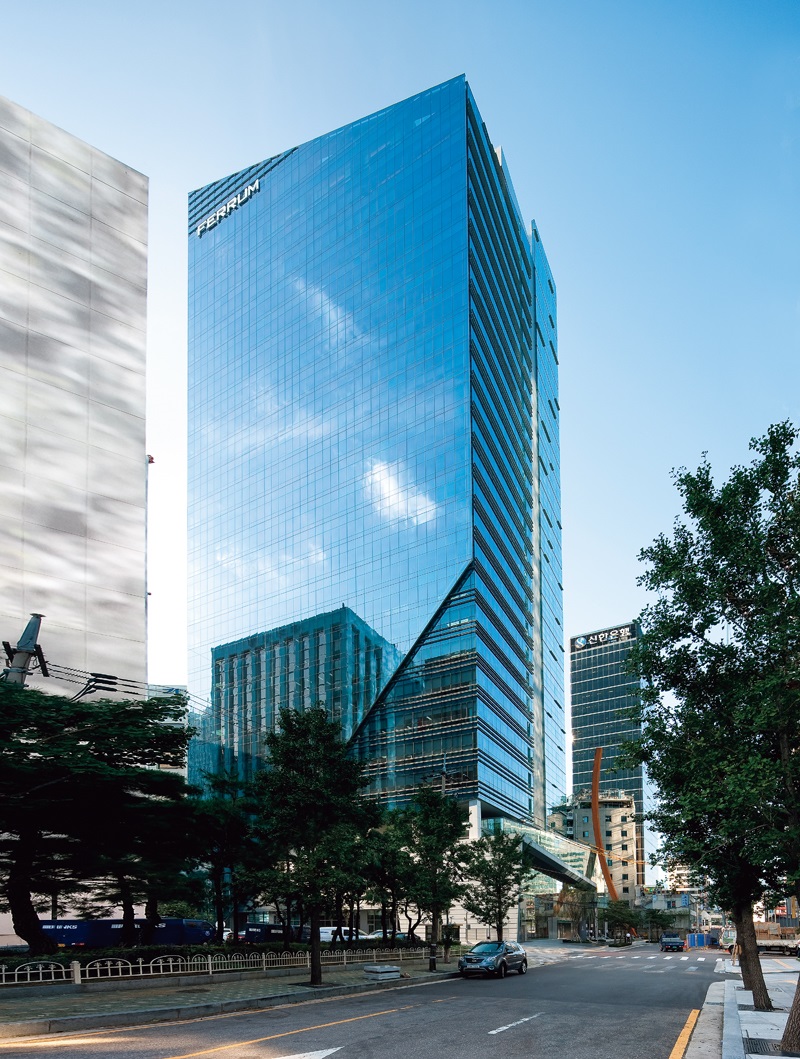
임석재(YIM Seockjae, 任奭宰) 이화여자대학교 건축학과 교수
Yim Seockjae Professor, Department of Architecture, Ewha Womans University
